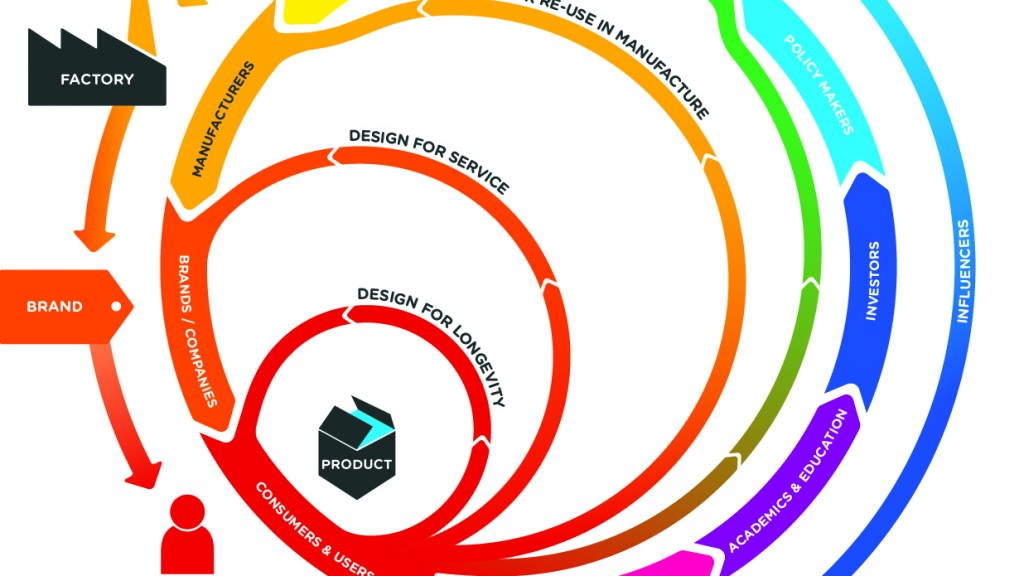Resources -
Four Design Models for Circular Economy

Much of our thinking has evolved around the different paths a product can take in order to be designed for circularity. This thinking is expressed through the four models, or principle; Ideally we look to design as close to the user as possible on the inner loop – for longevity, but if that is not realistic or relevant to the product we move on to designing for a different business model: leasing or service. The next loop of remanufacturing sees broken components replaced and the product restored to its original state, whilst the outer loop of material recovery (or recycling) involves the complete breakdown of materials before some are restored to the manufacturing process. The model allows the designer to understand who are key knowledge holders for the extended design team.
You are free to download below and use the diagram. Please credit any use to RSA Great Recovery.
I train children, students and teachers on circular economy and deliver CPD in the classroom. For the last couple of years we’ve used The Great Recovery diagrams because they make so much sense – you don’t need lots of experience to use them as they are so intuitive.
Steven Parkinson, Design & Technology consultant, lecturer and Co-Founder of Teach Design





